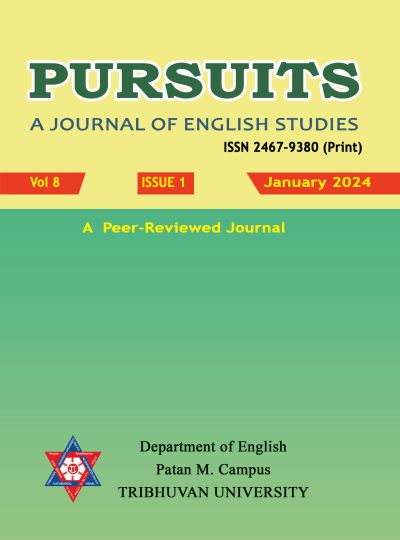Post-human Bodies in Atwood’s Oryx and Crake
DOI:
https://doi.org/10.3126/pursuits.v8i1.65339Keywords:
Body enhancement, fluid body, post-humanism, trans-humanismAbstract
This paper analyses the human bodies as a site of both aesthetics as well as politics in post-human turn in the novel Oryx and Crake by Margaret Atwood. Questions related to what is a body, who controls it, and what relation does it have to morality at techno-science culture share a negotiation between machine and morality. After the advent of popular culture, the concept of body as cogent and self-bounded entity is blurry one as the discourse of ‘what is a beautiful body’ reflects a growing concern with different approaches of body aesthetics. As seen the novel, Oryx and Crake by Margaret Atwood, we see Crakers— the genetically modified humans as an outcome of Crake’s aesthetics and politics. Jimmy’s father’s involvement in Pigoon Projects designed with the intention of providing human organs for transplantation and Crake’s involvement in creating Crakers—whom Crake had programmed to die at 30 open a new avenue for discussion regarding human identity. Such dimension of body aesthetics is precarious leading to ethical question as progress in science does not only enhance body, it also poses a threat to humanity in entirety. This research is qualitative and interpretive in nature. So, as a researcher, I have brought theoretical insights related to trans-humanism and post-humanism developed by Fukuyama, Braidotti. In the paper, I conclude that though new version of body aesthetics poses a threat to the world itself, it helps to understand how humans have co-evolved with other companion species. Thus, it contributes on the discussion of literary engagement and literary understanding of post humanism.




